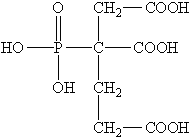Understanding the Properties and Applications of Poly Aluminium Chloride in Various Industries
Understanding Poly Aluminium Chloride An Overview
Poly Aluminium Chloride (PAC) is a widely utilized coagulant in various water treatment processes. As an inorganic polymer, PAC is known for its effectiveness in treating potable water, wastewater, and industrial effluents. This compound plays a crucial role in the clarification of water, making it safe for consumption and meeting regulatory standards. In this article, we will explore what PAC is, its properties, applications, and its significance in water treatment.
What is Poly Aluminium Chloride?
Poly Aluminium Chloride is a chemical compound comprised of aluminum, chlorine, and oxygen, existing in different forms including powder, liquid, and granulated products. The molecular formula for PAC varies, but it typically contains polyionic aluminum. This composition allows for effective coagulation, which is a critical process in water purification.
PAC is produced by the hydrolysis of aluminum chloride in aqueous environments. This process results in large, charged aluminum hydroxide molecules that attract and bind with suspended particles in water. When these particles coagulate, they form larger aggregates which can be easily removed from the water, thus improving clarity and safety.
Properties of PAC
One of the most notable properties of PAC is its high charge density. This characteristic enables it to operate effectively across a wide range of pH levels, which is advantageous in treating various types of water. Furthermore, PAC is less sensitive to changes in water temperature and turbidity compared to traditional coagulants like aluminum sulfate.
Additionally, PAC has a lower dosage requirement for effective coagulation, leading to cost savings in large-scale water treatment facilities. Its residue is less harmful to aquatic life and the environment, making it a more sustainable choice.
Applications of Poly Aluminium Chloride
PAC is predominantly used in water treatment
. Its applications can be categorized into several areaswhat is poly aluminium chloride

1. Potable Water Treatment PAC is widely employed to purify drinking water. By efficiently removing impurities, it helps achieve compliance with health and safety regulations.
2. Wastewater Treatment In industrial settings, PAC aids in the treatment of wastewater by removing contaminants and solids. It plays a vital role in recycling water and minimizing environmental impact.
3. Paper Industry PAC is also utilized in the paper manufacturing process, where it assists in paper sizing and improves the quality of the final product.
4. Food Industry In some cases, PAC is used in food processing, particularly in the clarification of certain beverages like juices.
5. Construction The product is used in concrete and cement production as a flocculant, helping to improve the material's binding properties.
Significance in Water Treatment
The significance of Poly Aluminium Chloride in water treatment cannot be overstated. As governments around the world implement stricter water quality standards, the demand for effective and efficient coagulants has increased. PAC stands out due to its versatility, effectiveness, and lower environmental impact when compared to traditional coagulants.
Moreover, the use of PAC contributes to achieving Sustainable Development Goals (SDGs) related to clean water and sanitation. By facilitating access to safe drinking water, PAC plays a fundamental role in public health and community well-being.
Conclusion
In conclusion, Poly Aluminium Chloride is a vital chemical in the realm of water treatment, known for its effectiveness and versatility. With its ability to improve water quality across various sectors, PAC is not just a coagulant but a crucial component in ensuring clean and safe water for all. As industries continue to seek sustainable and efficient solutions, the importance of PAC will undoubtedly grow, making it an integral player in the field of environmental management and public health.
-
Scale and Corrosion Inhibitors: Key to Industrial Water TreatmentNewsMay.22,2025
-
Organic Phosphate: Structure, Properties, and ApplicationsNewsMay.22,2025
-
Isothiazolinones: a versatile and versatile biocide with a wide range of applicationsNewsMay.22,2025
-
Industrial Flocculant: The Key to Optimizing Industrial ProcessesNewsMay.22,2025
-
Hydrolyzed Polymaleic Anhydride: Structure, Properties, and ApplicationsNewsMay.22,2025
-
Application of Flocculant in Water TreatmentNewsMay.22,2025





